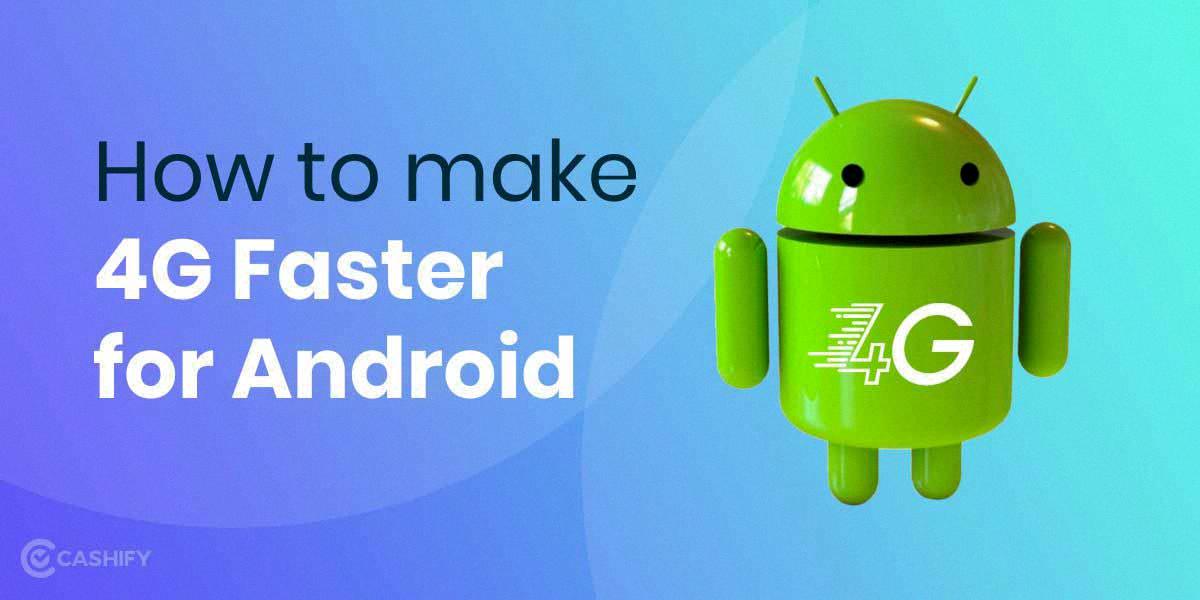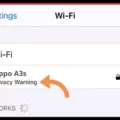In today’s fast-paced digital world, having a reliable and speedy internet connection on your Android device is essential. One of the most popular technologies for mobile internet is 4G LTE, which provides faster data speeds compared to its predecessors. However, sometimes you may find that your 4G connection is not performing as efficiently as it should. In this article, we will explore some tips and tricks to help you make your 4G internet faster on your Android device.
1. Clear your cache: Your Android device stores temporary files called cache, which can take up valuable storage space and slow down your internet speed. To clear the cache, go to Settings > Storage > Cached data, and tap on “Clear cached data.” This will remove unnecessary files and potentially improve your 4G speed.
2. Close unused apps: Running multiple apps in the background can consume a significant amount of system resources and network bandwidth. To improve your 4G speed, close any unused apps by accessing the recent apps menu and swiping them away.
3. Disable auto-update for apps: Automatic app updates can consume a significant amount of data and slow down your internet speed. To disable auto-updates, open the Google Play Store app, go to Settings > Auto-update apps, and select “Don’t auto-update apps” or “Auto-update apps over Wi-Fi only.”
4. Use a different browser or lite apps: Some web browsers and apps are designed to be more data-friendly and optimized for slower internet connections. Consider using browsers like Google Chrome Lite or Opera Mini, which compress data and load web pages faster, resulting in a better 4G experience.
5. Reset your network settings: Resetting your network settings can help resolve any connectivity issues that may be affecting your 4G speed. To do this, go to Settings > System > Reset options > Reset Wi-Fi, mobile, & Bluetooth. Keep in mind that this will remove saved Wi-Fi networks and Bluetooth devices, so make sure to reconnect to them afterward.
Now, let’s explore some additional steps you can take to improve your overall 4G experience:
6. Get a new phone or hotspot: If you’re using an outdated device, upgrading to a newer phone or hotspot that supports the latest 4G bands can significantly improve your internet speed. Newer devices often have better antennas and modem capabilities, resulting in faster data speeds.
7. Use external antennas: For those using hotspots or routers, connecting external antennas can boost both signal strength and quality. Outdoor antennas, specifically designed for 5G or 4G, can capture a stronger signal and transmit it to your device indoors, resulting in faster internet speeds.
8. Consider using a MIMO signal booster: MIMO (Multiple Input Multiple Output) signal boosters are specifically designed to improve data speeds on mobile devices. These boosters use advanced technology to amplify and enhance your 4G signal, resulting in faster internet speeds on your Android device.
By following these tips and tricks, you can optimize your 4G internet speed on your Android device. Clearing your cache, closing unused apps, disabling auto-updates, using data-friendly browsers or lite apps, and resetting your network settings can all contribute to a faster and smoother 4G experience. Additionally, upgrading your device or using external antennas or MIMO signal boosters can further enhance your internet speed. Experiment with these techniques to find the best combination that works for you and enjoy a faster 4G connection on your Android device.
How Can I Make My Phone 4G Faster?
To enhance the speed of your 4G phone, you can try the following methods:
1. Clear Cache: Clearing the cache on your phone can help in improving the speed of your internet connection. Cache files can accumulate over time and may slow down your device’s performance. Go to your phone’s settings, find the “Storage” or “Storage & Memory” option, and clear the cache.
2. Close Apps: Running multiple apps in the background can consume your device’s resources and affect its performance. Close any unnecessary apps running in the background to free up memory and potentially boost your internet speed.
3. Disable Auto-Updates: Automatic app updates can utilize your internet connection without your knowledge, leading to slower speeds. To disable auto-updates, go to the settings of your app store and disable the option for automatic updates. Instead, manually update your apps when you have a stable and fast internet connection.
4. Use a Different Browser or Lite Apps: Some browsers and applications are designed to be more data-efficient and require less processing power, resulting in faster internet speeds. Consider using a different browser or installing lite versions of apps that consume less data and resources.
5. Reset Network Settings: Resetting your network settings can help in resolving any network-related issues that may be affecting your internet speed. Go to your phone’s settings, find the “Network & Internet” or “Connections” option, and choose the “Reset Network Settings” option. Note that this will remove saved Wi-Fi networks and Bluetooth connections, so you will need to reconfigure them.
6. Update Software: Keeping your phone’s software up to date is essential for optimal performance and speed. Software updates often include bug fixes and performance enhancements that can improve your device’s overall performance, including internet speed.
Remember, the actual internet speed you experience can also depend on factors outside your control, such as network coverage, signal strength, and network congestion.

How Can I Boost My 4G Signal?
To boost your 4G signal, there are several steps you can take:
1. Position your device near a window or outside wall: Obstructions like walls and buildings can weaken your signal. By placing your device near a window or outside wall, you can improve the reception.
2. Use a signal booster or repeater: A signal booster or repeater amplifies the 4G signal, allowing it to reach areas with weak reception. These devices can be placed indoors and will enhance both the signal strength and quality.
3. Upgrade your device’s firmware: Manufacturers often release firmware updates that can improve the performance of your device, including its ability to connect to and maintain a strong 4G signal. Check for updates regularly and install them when available.
4. Switch to a better network: If you’re consistently experiencing weak 4G signal, it may be worth considering switching to a different network provider. Different providers have varying coverage areas, so switching to a provider with stronger coverage in your area could significantly improve your signal.
5. Use the right antenna: Outdoor antennas are crucial for improving indoor signal quality. These antennas connect to your router or signal booster, allowing for a better 4G signal indoors. If you’re in an area with a weak signal, investing in a good donor antenna can greatly enhance both signal strength and quality.
6. Reduce interference: Other electronic devices, such as cordless phones and microwave ovens, can interfere with your 4G signal. Keeping your device away from such sources of interference can help improve your signal strength.
7. Clear your device’s cache: Over time, your device’s cache can become filled with unnecessary data, which can hinder its performance, including its ability to connect to a strong 4G signal. Clearing your device’s cache can help optimize its performance and potentially improve signal reception.
Remember, boosting your 4G signal may require a combination of these steps, and it’s always a good idea to consult with your network provider for specific advice tailored to your situation.
How Can I Get High Speed Internet On 4G?
To get high-speed internet on 4G, there are several steps you can take:
1. Upgrade to a newer device: If you’re using an old phone or hotspot, consider upgrading to a newer model. Newer devices often support newer bands and technologies, which can result in faster speeds.
2. Check for band support: Different 4G bands are used by different carriers and in different regions. Make sure your device supports the bands used by your carrier or in your area. This information can usually be found on the manufacturer’s website or by contacting your carrier.
3. Use external antennas (for hotspots): If you’re using a 4G hotspot, consider attaching external antennas. These antennas can help improve signal strength and reception, leading to faster internet speeds. Make sure to choose antennas that are compatible with your device.
4. Consider a MIMO signal booster (for phones): If you’re using a 4G-enabled smartphone, a MIMO (Multiple-Input Multiple-Output) signal booster can help improve your signal strength and data speeds. These boosters use multiple antennas to enhance both incoming and outgoing signals, resulting in faster internet speeds.
5. Optimize your device settings: Ensure that your device is set up for optimal performance. This includes disabling unnecessary background apps, clearing cache and temporary files, and regularly updating your device’s software to take advantage of any performance improvements.
6. Find the best network coverage: Different carriers have varying coverage in different areas. Research and compare the network coverage in your location to find the carrier that offers the best 4G speeds in your area.
7. Limit network congestion: During peak usage times, network congestion can occur, leading to slower internet speeds. Consider using your 4G internet during off-peak hours to avoid congestion and enjoy faster speeds.
8. Use Wi-Fi whenever possible: When available, connect to a stable Wi-Fi network for faster internet speeds. Wi-Fi networks generally offer higher speeds and better performance compared to cellular networks.
Remember, the actual speed you experience will depend on various factors such as network coverage, signal strength, and network congestion. By following these steps, you can optimize your 4G internet connection to achieve high-speed browsing, streaming, and downloading.
Why Is My Phone So Slow On 4G?
There could be several reasons why your phone is running slow on 4G. Here are some possible explanations:
1) Network Congestion: When there is a high demand on the network, such as during peak usage times, the network may become congested. This can result in slower data speeds as the network has to work harder to accommodate the increased traffic.
Solution: Try using your mobile device during non-peak hours, when there will be less demand on the network. This can help alleviate congestion and improve your data speeds. Additionally, certain applications and web browsers have mobile data compression settings available. Enabling these settings can help reduce the amount of data being transferred, potentially speeding up your browsing experience.
2) Distance from Cell Tower: The further you are from a cell tower, the weaker the signal may be. This can lead to slower data speeds and a less reliable connection.
Solution: If possible, try moving closer to a cell tower to improve your signal strength. This can help increase your data speeds and overall connectivity.
3) Obstructions: Physical obstructions, such as buildings or trees, can block or weaken the signal between your phone and the cell tower. This can result in slower data speeds.
Solution: If you are experiencing slow speeds in a specific location, try moving to a different area with fewer obstructions. This may help improve your signal strength and data speeds.
4) Network Provider Issues: Sometimes, the issue may be related to your network provider. They could be experiencing technical difficulties or performing maintenance that is affecting your data speeds.
Solution: Contact your network provider to inquire about any known issues in your area. They may be able to provide assistance or give you an estimated time for when the issue will be resolved.
5) Phone Software or Hardware Issues: Occasionally, slow data speeds can be attributed to software or hardware problems on your phone. Outdated software, too many running applications, or a malfunctioning antenna can all contribute to slow performance.
Solution: Ensure that your phone’s software is up to date and consider closing any unnecessary applications running in the background. If the problem persists, you may need to consult with a technician to diagnose and resolve any hardware issues.
By considering these possible causes and implementing the suggested solutions, you should be able to improve the speed of your phone on 4G.
Conclusion
4G technology has revolutionized the way we connect to the internet on our mobile devices. It offers faster speeds and better reliability compared to its predecessor, 3G. With 4G, we can stream videos, download files, and browse the web with ease.
However, there are still factors that can affect the speed of your 4G connection. Network congestion can slow down data speeds, especially during peak hours. To overcome this, it is advisable to use your mobile device during non-peak hours when there is less demand on the network.
Another way to improve your 4G speed is by using external antennas or signal boosters. These can help enhance the signal strength and quality, especially in areas with weak coverage. Upgrading to a new phone or hotspot that supports the latest 4G bands can also improve your connection speed.
Additionally, clearing your cache, closing unused apps, and disabling auto-updates can help optimize your device’s performance and speed up your internet connection. Using a different browser or lite apps designed to consume less data can also be beneficial.
By implementing these tips and tricks, you can maximize the potential of your 4G internet connection and enjoy a faster and smoother browsing experience on your mobile device.








